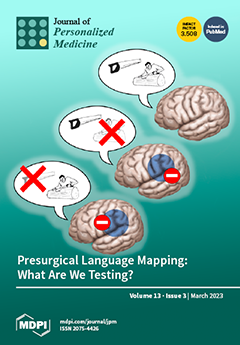Background:
Rotundine is an herbal medicine with anti-cancer effects. However, little is known about the anti-cancer effect of
rotundine on colorectal cancer. Therefore, our study aimed to investigate the specific molecular mechanism of
rotundine inhibition of colorectal cancer. Methods: MTT and cell scratch
[...] Read more.
Background:
Rotundine is an herbal medicine with anti-cancer effects. However, little is known about the anti-cancer effect of
rotundine on colorectal cancer. Therefore, our study aimed to investigate the specific molecular mechanism of
rotundine inhibition of colorectal cancer. Methods: MTT and cell scratch assay were performed to investigate the effects of
rotundine on the viability, migration, and invasion ability of SW480 cells. Changes in cell apoptosis were analyzed by flow cytometry. DEGs were detected by high-throughput sequencing after the action of
rotundine on SW480 cells, and the DEGs were subjected to function enrichment analysis. Bioinformatics analyses were performed to screen out prognosis-related DEGs of COAD. Followed by enrichment analysis of prognosis-related DEGs. Furthermore, prognostic models were constructed, including ROC analysis, risk curve analysis, PCA and t-SNE, Nomo analysis, and Kaplan–Meier prognostic analysis. Results: In this study, we showed that r
otundine concentrations of 50 μM, 100 μM, 150 μM, and 200 μM inhibited the proliferation, migration, and invasion of SW480 cells in a time- and concentration-dependent manner.
Rotundine does not induce SW480 cell apoptosis. Compared to the control group, high-throughput results showed that there were 385 DEGs in the SW480 group. And DEGs were associated with the Hippo signaling pathway. In addition, 16 of the DEGs were significantly associated with poorer prognosis in COAD, with
MEF2B,
CCDC187,
PSD2,
RGS16,
PLXDC1,
HELB,
ASIC3,
PLCH2,
IGF2BP3,
CLHC1,
DNHD1,
SACS,
H1-4,
ANKRD36, and
ZNF117 being highly expressed in COAD and
ARV1 being lowly expressed. Prognosis-related DEGs were mainly enriched in cancer-related pathways and biological functions, such as inositol phosphate metabolism, enterobactin transmembrane transporter activity, and enterobactin transport. Prognostic modeling also showed that these 16 DEGs could be used as predictors of overall survival prognosis in COAD patients. Conclusions:
Rotundine inhibits the development and progression of colorectal cancer by regulating the expression of these prognosis-related genes. Our findings could further provide new directions for the treatment of colorectal cancer.
Full article






